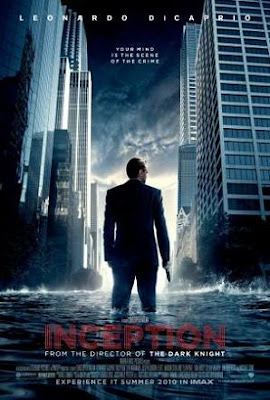
Last night I witnessed Charles Ross'
One Man Lord of the Rings at
Woolly Mammoth. If you've never been there before, Woolly Mammoth is a little independent theater in Penn Quarter that not only hosts plays, but creates their own edgy, punk rock productions as well. It's about a block from the Archives/Navy Memorial station.
Charles Ross is the Canadian behind the now-legendary
One-Man Star Wars Trilogy which he's been touring with for over nine years now, and last year he finally acquired the permission from Peter Jackson & Co. to perform his rendition of the Tolkien classics.
One Man Lord of the Rings is done in the same style as his
Star Wars trilogy: reenacting all three films by himself in just over an hour, without any props and wearing only a black jumpsuit. He plays 42 different characters, depicts each one as a unique entity (
Legolas constantly brushes his hair,
Denethor can't stop greedily eating baby tomatoes), and provides ample nerdy inside jokes throughout.
Of course Ross' impression of
Gollum is spot-on. This is often considered the mark of a great
Lord of the Rings reenactor, but I don't think it ends there. His true success is his perfect
Uruk-hai voice. Most people don't even think about what these baddies sound like, since they play a relatively small role in the story. But it's a voice we all know too well: "FIND THE
HALFLINGS!" This unique death-metal-vocalist-in-the-army voice is nearly impossible for most people to do, but Ross gets it exactly right.

The real key of it all, of course, is the humor. We didn't pay to see
The Lord of the Rings in 65 minutes. We paid to see a hilarious parody of
The Lord of the Rings in 65 minutes. If you've never read the books or seen the movies, this performance probably won't be funny at all, but that's how it should be. It's a production aimed squarely at huge nerds who would get the White Tree of
Gondor tattooed on their arm *cough cough*. Not only does Ross perform
Star Wars and
LotR at theaters, he also does it at nerd conventions around the world. I love it.
I had forgotten how much I love Woolly Mammoth. The building itself features beautiful industrial-modern architecture, and the people working there are active in the vibrant D.C. indie theater scene. If you've never been to a play at Woolly Mammoth, you really need to experience it firsthand. Unfortunately,
One Man Lord of the Rings only runs through the end of this week, but there's a lot more to choose from, like
The Vibrator Play and
The Agony and Ecstasy of Steve Jobs.
Charles Ross' attention to detail in his work is fantastic. He hits many of the key lines from the films that aren't exactly integral to the storyline, but are famous lines nonetheless. He does a full recreation of
Legolas'
takedown of an
Oliphaunt followed by
Gimli's "That still only counts as one!" He puts adequate emphasis on Sam's slow-motion "
sharrre the
loaadddd" from
The Return of the King. But my favorite has to be his subtle reference to the greatest
Lord of the Rings-related YouTube video of all time... "They're Taking the Hobbits to
Isengard":
 With the connotations the term "vampire movie" has garnered the past couple years, I wouldn't say I'm a fan of vampire flicks at all. But 2008's Let the Right One In is a breed apart. It's a beautifully shot, stark film based on a 2004 novel by the same name about kids growing up in a snowy town in the early '80s. Låt den rätte komma in, as it's known in Sweden, was a surprise hit outside of its home country, and won a ton of awards all over the world for a relatively unknown director named Tomas Alfredson.
With the connotations the term "vampire movie" has garnered the past couple years, I wouldn't say I'm a fan of vampire flicks at all. But 2008's Let the Right One In is a breed apart. It's a beautifully shot, stark film based on a 2004 novel by the same name about kids growing up in a snowy town in the early '80s. Låt den rätte komma in, as it's known in Sweden, was a surprise hit outside of its home country, and won a ton of awards all over the world for a relatively unknown director named Tomas Alfredson. Pretty similar, eh? Some are even calling it a "shot-for-shot remake." But before we jump to all these conclusions, let's get some perspective. American remakes of foreign-language films that were released only a few years before isn't uncommon, and it isn't always a bad thing. Martin Scorsese's 2006 film The Departed is often cited as one of the greatest movies of all time, and it's a remake of a Hong Kong flick from only four years earlier called Infernal Affairs.
Pretty similar, eh? Some are even calling it a "shot-for-shot remake." But before we jump to all these conclusions, let's get some perspective. American remakes of foreign-language films that were released only a few years before isn't uncommon, and it isn't always a bad thing. Martin Scorsese's 2006 film The Departed is often cited as one of the greatest movies of all time, and it's a remake of a Hong Kong flick from only four years earlier called Infernal Affairs.
















 10. Bhutan: A simple yet unique color scheme that features
10. Bhutan: A simple yet unique color scheme that features 
 8. Uganda: This is another flag with a unique color scheme. There is no traditional green, but the black / yellow / orange combination still looks
8. Uganda: This is another flag with a unique color scheme. There is no traditional green, but the black / yellow / orange combination still looks 





















